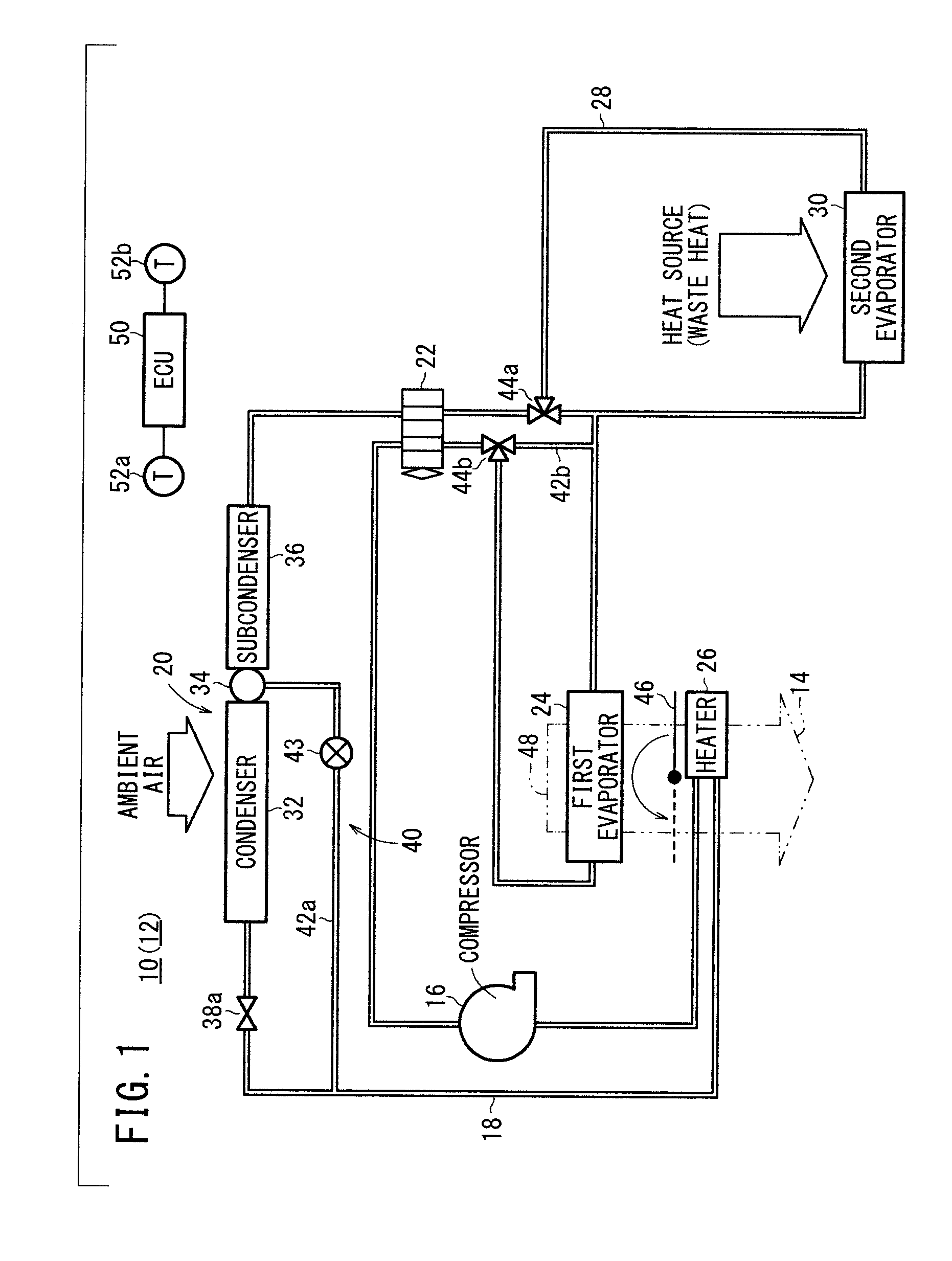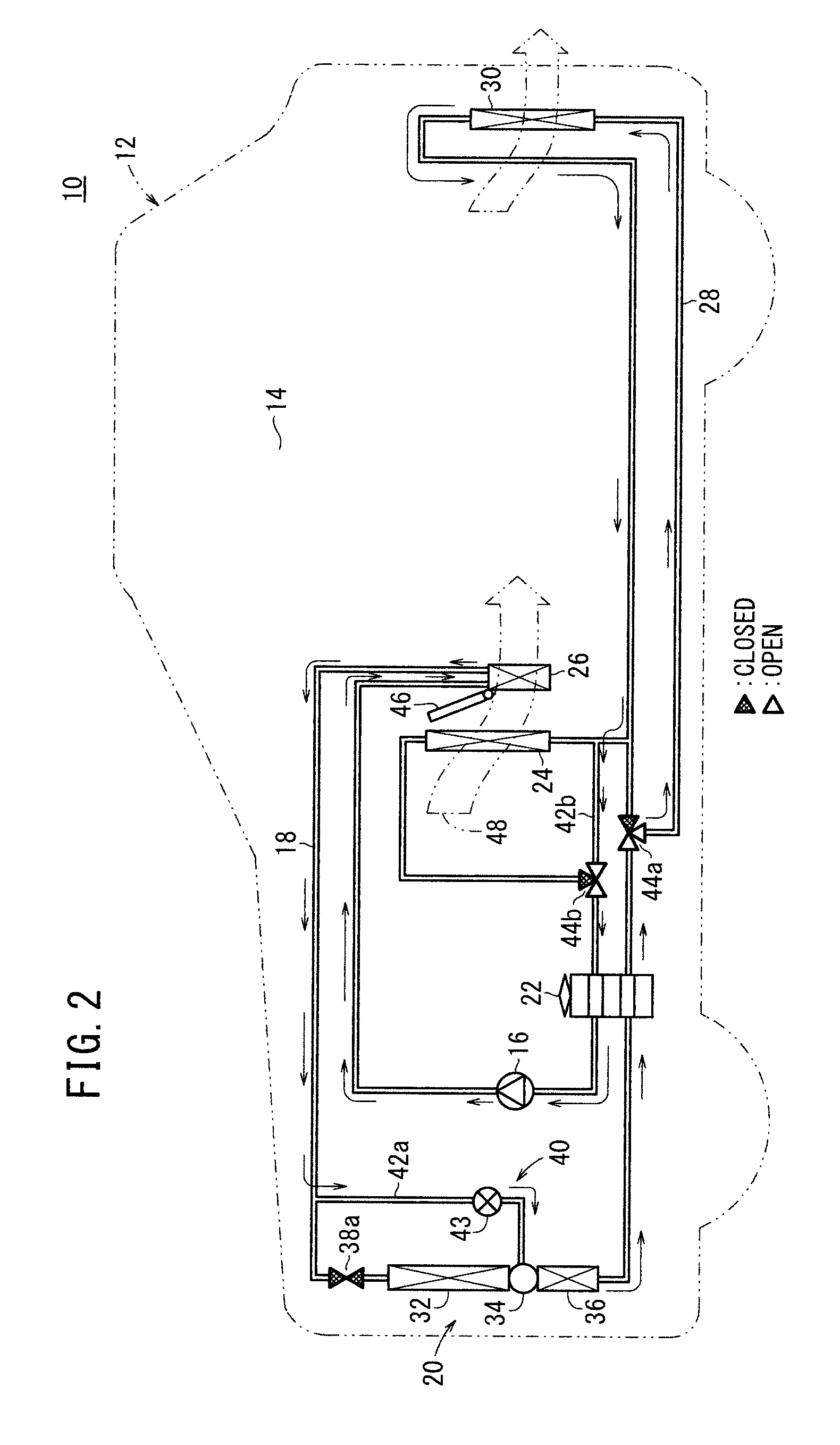Operation method of heat pump-type vehicle air conditioning system
a technology of vehicular air conditioning and operation method, which is applied in the direction of heat pumps, domestic cooling devices, lighting and heating devices, etc., can solve the problems of uneconomical vehicular air conditioning devices and lowered air-conditioning performance, and achieve the effect of increasing the work efficiency of the compressor, increasing the pressure of the refrigerant, and quick heating the cabin
- Summary
- Abstract
- Description
- Claims
- Application Information
AI Technical Summary
Benefits of technology
Problems solved by technology
Method used
Image
Examples
first embodiment
[0025]As shown in FIGS. 1 and 2, a heat pump-type vehicular air conditioning system 10 to which an operating method according to the present invention is applied is incorporated in an automobile (vehicle) 12 for air-conditioning a passenger cabin (vehicle compartment) 14 of the automobile 12.
[0026]The air conditioning system 10 includes a heat pump circulation path 18 for circulating a refrigerant with a compressor 16. The heat pump circulation path 18 includes therein a condenser unit (subcooling condenser) 20 for performing heat exchange between the refrigerant and ambient air, an expansion valve 22 for depressurizing the refrigerant delivered from the condenser unit 20, a first evaporator 24 for performing heat exchange between the refrigerant, which has passed through the expansion valve 22, and air-conditioning air, and a heater 26 for performing heat exchange between the refrigerant, which has been delivered from the compressor 16, and the air-conditioning air, which has passe...
second embodiment
[0054]FIG. 9 is a schematic block diagram of a heatpump type vehicular air conditioning system 70 to which an operating method according to the present invention is applied.
[0055]Parts of the air conditioning system 70 according to the second embodiment, which are identical to those of the air conditioning system 10 according to the first embodiment, are denoted by identical reference characters, and such features will not be described in detail below.
[0056]The air conditioning system 70 includes a bypass unit 72, which connects the heater 26 and the gas-liquid separation refrigerant storage unit 34 to each other in bypassing relation to the condenser 32 in the heating mode. The bypass unit 72 includes a first bypass passage 42a and a third bypass passage 42c, together with a capillary 74, which is connected to the first bypass passage 42a and functions as a pressure loss device for imparting a pressure loss to the refrigerant. A solenoid-operated valve 38b is connected upstream of ...
PUM
 Login to View More
Login to View More Abstract
Description
Claims
Application Information
 Login to View More
Login to View More - R&D
- Intellectual Property
- Life Sciences
- Materials
- Tech Scout
- Unparalleled Data Quality
- Higher Quality Content
- 60% Fewer Hallucinations
Browse by: Latest US Patents, China's latest patents, Technical Efficacy Thesaurus, Application Domain, Technology Topic, Popular Technical Reports.
© 2025 PatSnap. All rights reserved.Legal|Privacy policy|Modern Slavery Act Transparency Statement|Sitemap|About US| Contact US: help@patsnap.com



